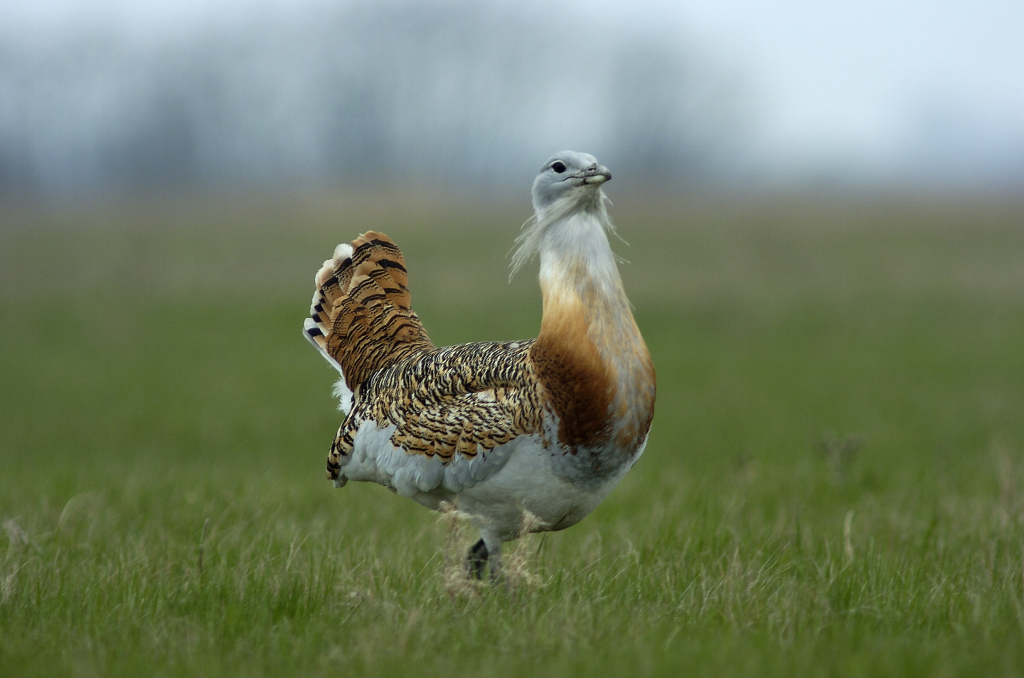
Protected: What is a Great Bustard – TEST PAGE?
Names
COMMON NAME: Great Bustard
Bustard is derived from the Latin avis tarda, meaning slow bird.
SCIENTIFIC NAME: Otis Tarda
Otis
Otis is thought to come from the old Greek word for ear, as in an ear of wheat or barley which resembles the whiskers that the male Great Bustards grow each spring.
Tarda
Tarda, is Latin for “slow” or “deliberate”, which is thought to describe the walking style of the species.
COLLECTIVE NOUN: Drove
A group of Great Bustards is known as a drove. This could contain from 20-40 birds.
Taxonomy
- Kingdom: Animalia
- Phylum: Chordata
- Class: Aves
- Order: Gruiformes
- Family: Otitidae
- Genus: Otis
- Species: Otis tarda

Physical appearance
Huge, heavily built and robust, but stately in appearance, adult male bustards can be identified by their bulging neck, heavy chest and characteristically cocked tail.
Their shape is similar to a large goose, but the bustard is much larger with considerably longer legs and a straighter neck.
Males develop a band of russet coloured feathers on their lower neck and breast, which becomes wider and brighter as they get older. They grow large impressive bold white moustache whiskers (20cm long) and the colours on their back and the tail become more vivid.
The female’s plumage is much more cryptic than males.
Weight/Size
As a species their weight is on average 3-18kg. The average mature male can range in weight from 5.8 to 18kg, with the maximum recorded at 21kg. Females are up to a third smaller, ranging in weight from 3.5 to 5kg.
2nd World Record
Great bustards have the largest sexual dimorphism in the bird world.
The males are much bigger: sometimes up to 5 times the weight of females and as much as 50% bigger in size.
Height
Their average species standing height is about 75 -115cm. The male standing height is between 90–115 cm. A female’s standing height is 75-85cm
Wingspan
As a species they have a 2.1–2.7m wingspan on average. The male wingspan is 210-250cm. The female wingspan is 170-190cm
Feet
Bustards have special tridactyl feet. They have only three toes, which all face forward and lack an opposable hind toe (hallux). This means they can run very fast, but cannot perch on anything, so they are a ground-dwelling bird.

Habitat
Great Bustards mostly inhabit open grassland, although they can be found on undisturbed cultivation. Traditionally birds of expansive grass plains, they have adapted well to arable farming in some European countries. Arable fields bearing crops such as oil seed rape and lucerne now appear to be more attractive than natural steppe, although farmland areas with high agricultural disturbance near human settlements are often avoided.
World population
According to the IUCN Red List, the world’s Great Bustard population is estimated to be between 44,000 and 57,000 individual birds.



